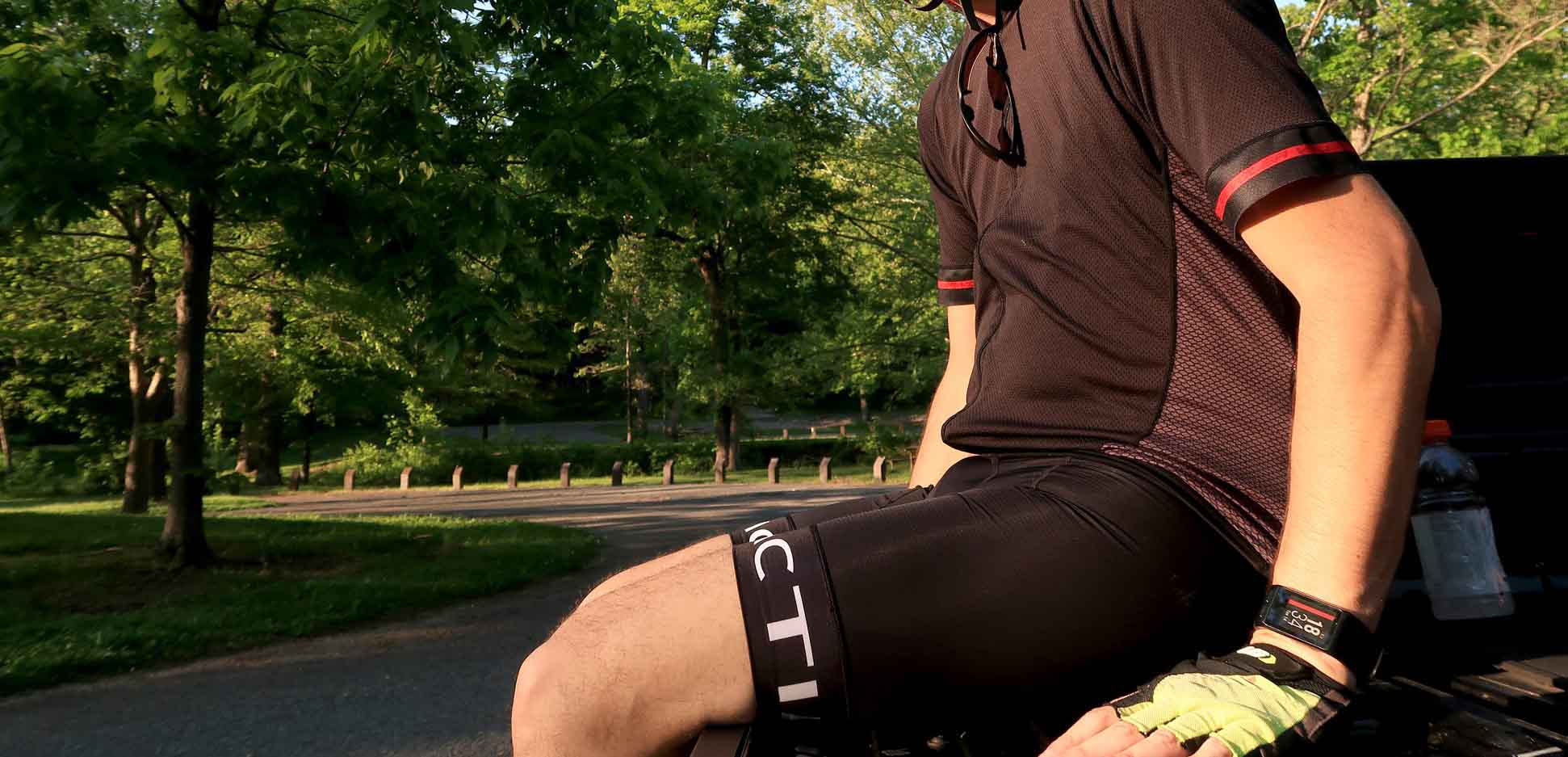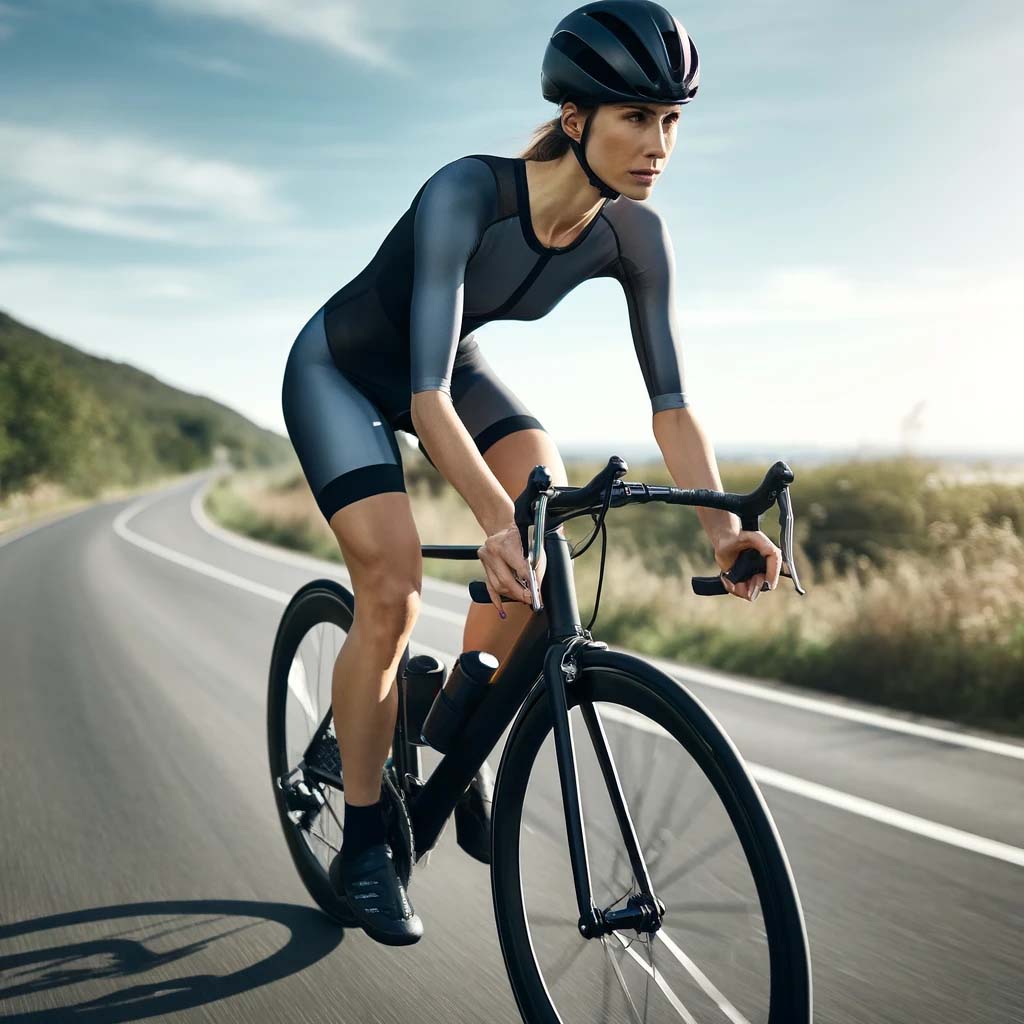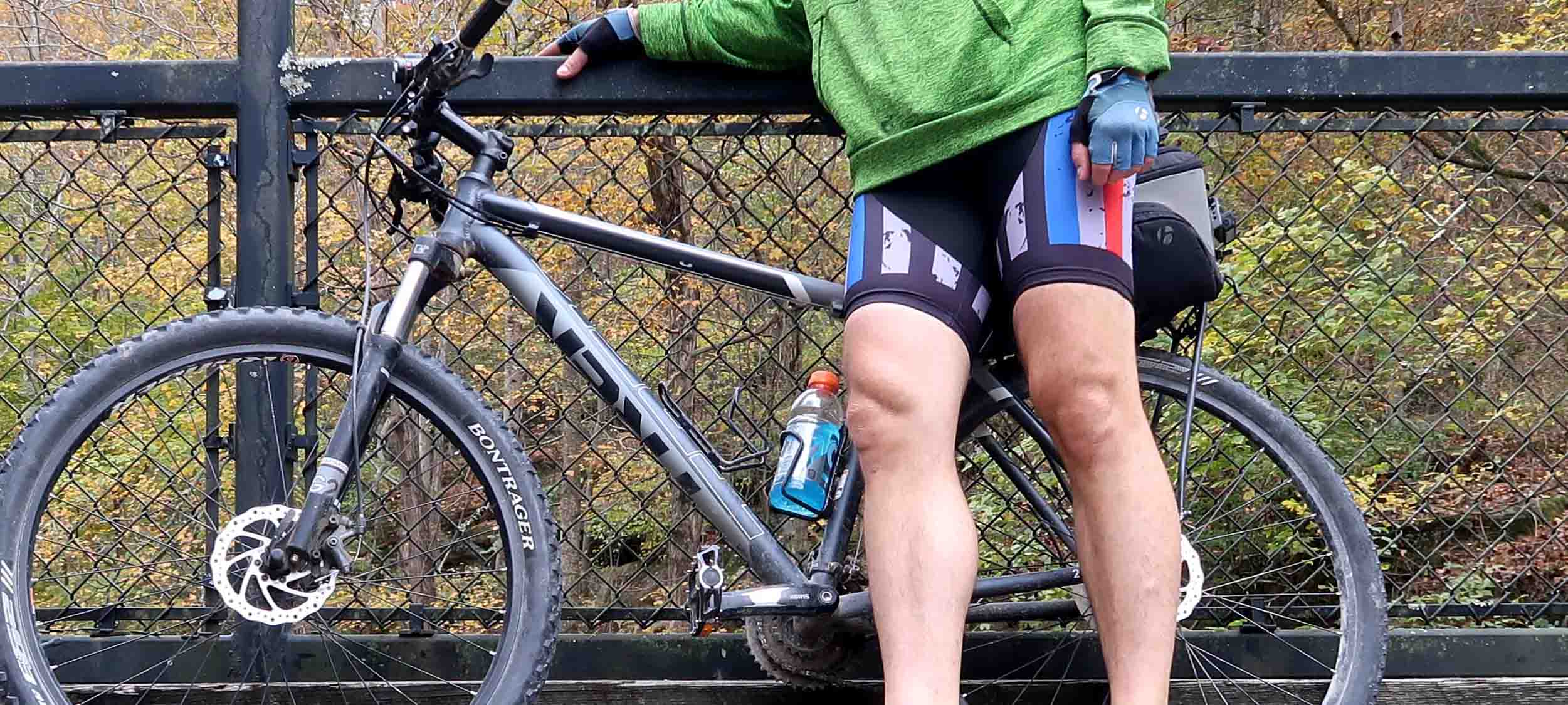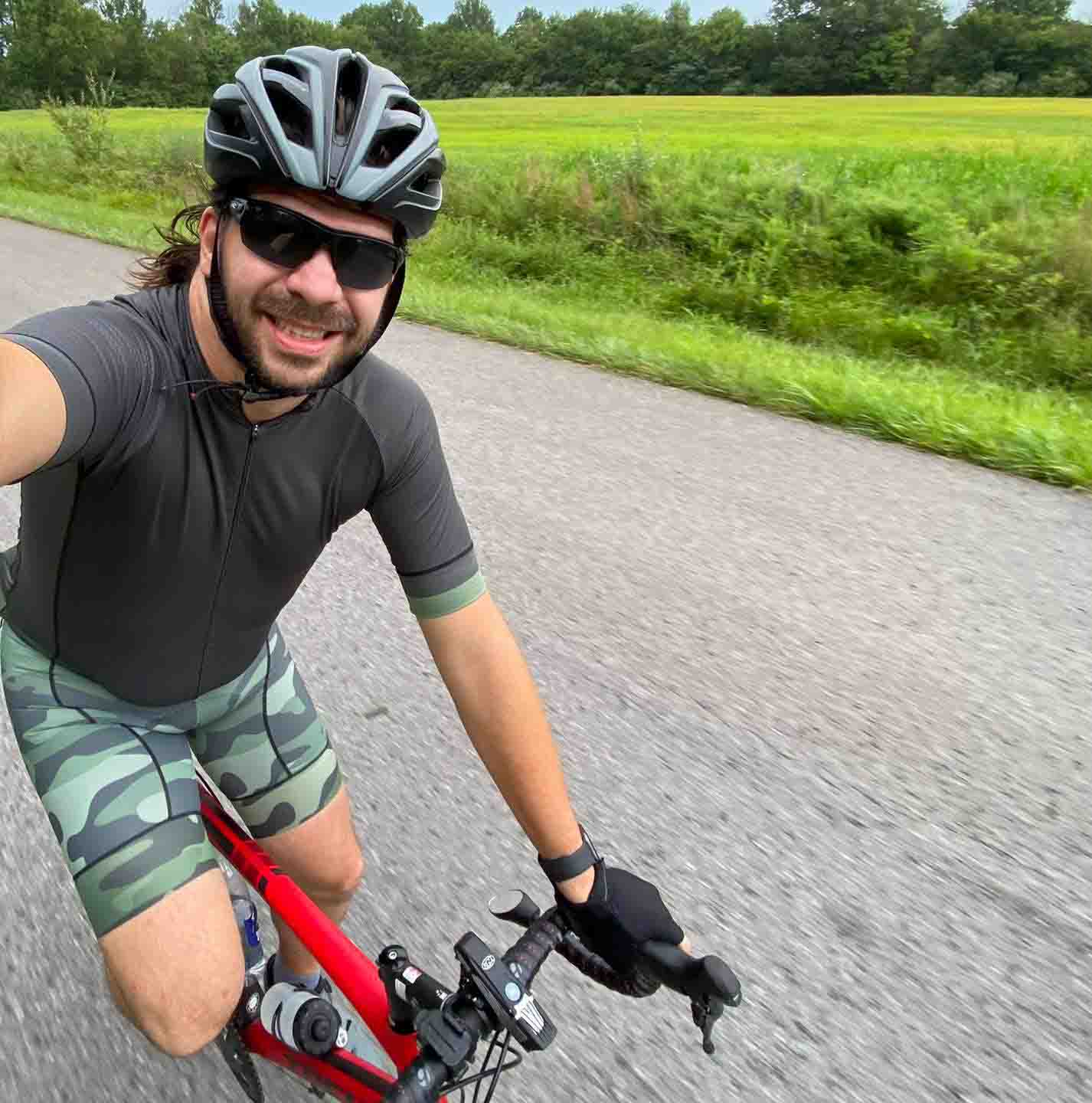An Ultimate Guide to Cycling Apparel
Cycling apparel is a big topic that most cyclists should know about because it’s the very fabric that will help us perform better and feel better while on the bike.
Your bike kit isn’t just about conforming to a look or making you attractive. It’s primarily about comfort and performance, and it’s crucial to understand this. Cycling clothing is designed to enhance your comfort, improve your performance, and prevent injuries, providing you with the confidence to push your limits on the bike.
In this guide, I’ll explain everything you need to know about cycling apparel so that you can make the best buying decisions.
Types of Cycling Apparel
There are many different types of cycling apparel available on the market. Each has its own function, so it’s important to understand what each item of apparel can do for you as a cyclist.
Cycling Jerseys
Cycling jerseys are shirts worn for riding. They typically have a zipper on the front and three deep pockets on the back. When zipped up, most jerseys are collared like a polo. The waist and arm bands typically have material to help hold them in place.
Most cycling jerseys are made with a combination of polyester, spandex, nylon, and other breathable materials. These materials are chosen for their moisture-wicking properties, which help to keep you dry and comfortable during your ride. For cold weather, jerseys are often made with thermal properties such as fleece and Merino wool, which provide insulation without adding bulk. Understanding these material choices can help you select the right jersey for your riding conditions.
Cycling jerseys are made to be breathable, wicking moisture from your upper body. This helps reduce foul odors and keep your upper body dry. The jersey also has UV protection built in to help reduce your exposure to harmful UV rays.
There’s a world of variety in cycling jerseys, from design to fit. You can choose from a rainbow of colors, opt for more or fewer pockets, select a full zip or no zip, and even find options for big and tall sizes. Whether you prefer a relaxed fit or a more compression-based race fit, there’s a jersey out there that’s perfect for you, making the process of choosing your cycling apparel an exciting and engaging one.
It’s always good to have several jerseys in your cycling apparel collection.
Cycling Shorts and Bib Shorts
Cycling shorts and bib shorts are designed for cycling comfort. Inside the shorts is a padding, called a chamois, that is there to help alleviate discomfort and reduce shock and friction on your bottom and sit bones. The chamois is a crucial component of cycling shorts, providing cushioning and reducing the risk of chafing during long rides. Understanding the purpose of the chamois can help you choose the right shorts for your riding style.
Cycling shorts often include padding, leg grippers to help keep the shorts on, a comfortable waistband, and some include pockets. Bib shorts are the same but have suspender-like straps to reduce discomfort around the waist. I can only wear bib shorts now because of the comfortability of the cycling apparel. In women’s bib shorts, there is often a feature to unfasten the bibs for easier restroom breaks.
Most cyclists wear tight, compression-based cycling shorts or bib shorts. However, baggier options are popular in many mountain biking disciplines. Shorts and bibs come in many different colors and styles, with or without pockets and reflective details. Most also come with UV protection.
Cycling shorts and bib shorts are often made with moisture-wicking and breathable materials such as spandex, Lycra, nylon, polyester, and even fleece and Merino wool for thermal options. Thermal cycling shorts and bibs are great on cooler days when you can wear leg warmers with the intention of taking them off at some point. The thermal short will help balance the temperature.
The main core function of shorts and bibs, though, is the pad that helps to protect your backside while you’re in the saddle.
Cycling Tights and Knickers
Cycling tights are full-length, tight-fitting compression pants made for cycling. Cycling knickers are usually ¾ length, tight-fitting compression pants made for cycling, though some knickers may be even shorter at or just past the knees. There are regular tights and knickers or bib tights and bib knickers.
Cycling tights and knickers are optional when it comes to the padding or chamois built into the cycling apparel. Some cyclists wear cycling shorts or bibs under unpadded tights or knickers, which makes the tights or knickers a layer that can be removed if the cyclist becomes too warm. However, you can also get tights and knickers with padding if you choose to wear them alone on really cold days.
Cycling tights and knickers come in thermal options (made with fleece and Merino wool) or non-thermal options (made with materials used in cycling shorts). You can get them in many colors and designs. Most have some sort of reflective detail. Most have built-in UV protection. You can get tights and knickers with pockets, too.
If you’re planning to cycle in cold weather, cycling tights and knickers are a must-have item in your cycling apparel collection. They provide the necessary warmth and protection, ensuring you’re prepared and secure for any weather conditions.
Cycling Skinsuit
A cycling skinsuit is a cycling jersey and shorts combined into one piece of cycling apparel. Skinsuits are tight-fitting compression apparel. They typically have a zipper in the front. They’re made with spandex and have UV protection. You can get them in long or short. Some have pockets, and some don’t. The ones that don’t have pockets will be more aerodynamic.
The benefits of a skinsuit are mainly geared toward racing. It will reduce drag and make you more aerodynamic because the second skin fit is like wearing nothing at all. However, I’ve found skinsuits to be great for mountain biking, too. If you ride tight and narrow singletrack trails with twigs and branches, a skinsuit provides less opportunity for material to snag on natural elements.
Most cyclists only have skinsuits in their cycling apparel collection if they are into racing.
Cycling Gloves
Cycling gloves help keep hands warm and dry and reduce shock and friction. When you don’t wear cycling gloves, your hands will usually be in pain after a long ride. Gloves can help prevent that while also wicking moisture from your hands and better balancing the temperature.
Some gloves are padded, while others have no padding whatsoever. This is really a preference thing. You might try padded gloves for a while and then switch to unpadded ones to see if they feel better. I prefer padded gloves because I tend to put weight on my hands while biking.
Most cycling gloves cover about a quarter of each finger. We call these fingerless gloves. They tend to be the most comfortable gloves, especially in the summer. In the winter, however, you might want to get full-finger gloves instead. Keeping your hands warm will be a priority while on the bike.
Most cyclists will add multiple pairs of gloves a year to their cycling wardrobe.
Cycling Socks
Cycling socks are definitely different from regular socks. They tend to be more compression-based, which helps with recovery. They’re also made with breathable and moisture-wicking materials. Most cycling socks are thinner, but thicker winter-styled socks are definitely available for cold-weather riders.
As with any socks, you can get different lengths. Ankle, crew, and even knee-high cycling socks are available. You can also get them in almost any color and design. Many companies will let you design custom cycling socks.
You should definitely add a few pairs of cycling socks to your wardrobe, and your feet will thank you for it.
Cycling Jackets & Vests
For cooler weather and winter cycling activities, you’ll want to invest in a cycling vest and a jacket for colder rides. Both of these will give you excellent layers to wear on colder riding adventures. Cycling vests are also becoming very popular with many riders.
You should get vests and jackets that are made for cycling. They should be waterproof or at least water resistant. Waterproof is going to keep you drier than something marked as water resistant. You should also ensure you get items that are resistant to wind. Your vest will act as a layer to be worn under your jacket on colder days.
Laying is a technique that you should master as a cyclist. In this technique, you wear different cycling apparel, with the idea of subtracting layers as you warm up or adding additional layers the colder you get.
A good cycling vest and jacket will help you stay warm during the cold weather season.
Cycling Shoes & Cleats
Cycling shoes and cleats are important parts of your cycling wardrobe. These shoes are specially designed to include cleats that allow you to clip into your pedals. By clipping into your pedals, you mitigate the risk of slipping off your bike. Clipping in also allows you to be faster and control your cadence much easier.
There are many different cycling shoes to choose from. You can get shoes specifically designed for road biking, ones designed for mountain biking, and ones designed for gravel cycling. I have found that mountain biking shoes are the most comfortable of all the designs.
There are also different cleats to choose from. Some of the most popular ones include SPD and Look styles. Look cleats are often used for road biking, while SPDs are used more with mountain bike shoes. This is really just a personal preference, and you should try different options to see which one is right for you.
If you’re not using cycling shoes and cleats yet, you’re truly missing out on improving your cycling routines and riding technique.
Arm & Leg Warmers
Warm and leg warmers are sleeves designed to cover arms and legs. They are created for UV protection and layering during colder rides. Most of these sleeves are made with breathable, moisture-wicking materials such as spandex and polyester. There are also insulated options made with fleece and Merino wool.
You can get arm and leg warmers in different lengths. You can get the leg warmers that go a little past the knee or get full-length ones. You can also get full-length ones for your arms, as well. They come in many different colors and designs, too.
Arm and leg warmers make excellent layers for cold-weather cycling, and every cyclist should have them in their wardrobe.
Cycling Caps, Face Covers, & Helmets
For cold-weather cycling apparel, you can also get caps to wear under your helmet, and face covers such as balaclavas. These items will help you keep your face and head warm during your ride. You just want to make sure you can hear well, especially if riding on the road with cars.
A good pair of cycling glasses will also be needed. Glasses can protect your eyes from harmful UV rays from the sun and debris that might fly into them while you’re riding. They also help keep cold air from entering your eyes during cold-weather cycling.
Please wear a helmet. It can help keep you warm, but it will also help save your life. Most fatalities involving cyclists are from those who do not wear helmets. In some areas, you have to wear a helmet when riding your bike.
Keeping your face and head warm and protected is essential in the cycling world.
Materials Used in Cycling Apparel
There are many materials used to make cycling apparel, which you should read up on to help you make the best decision about which products to purchase for your cycling collection.
- Breathable Fabrics: This material allows air to get into and out of your apparel, which helps control odor and moisture.
- Moisture-wicking materials: These materials will help keep you dry, which is especially important during colder weather when sweat can become a hazard.
- Compression Fabrics: Tight-fitting material is the best for cycling because it helps to aid recovery while also making you more aerodynamic.
- Waterproofing and wind proofing: These materials will help prevent rain and wind from penetrating your cycling apparel and making your ride uncomfortable.
- Eco-friendly brands and materials: These materials are made with fabrics that are friendly to the environment and made in a way that reduces the carbon footprint.
- Recycling options for old apparel: These materials use fabrics and items recycled from older cycling apparel.
Do try to stay away from cotton. There are cotton bike shorts out there, but those are not made for cycling activities because cotton doesn’t breathe and holds moisture, which is not at all beneficial for cyclists.
Choosing the Right Fit
When choosing cycling apparel, make sure you’re getting items that will actually fit you.
You want to make sure your apparel fits you. It should be fitting and snug (the compression types) but not uncomfortable. For example, if you’re wearing a pair of bib shorts that are so tight they’re uncomfortable and the shoulder straps are digging into your shoulders, you’re likely wearing the wrong size. Wearing uncomfortable apparel will more than likely make your rider miserable.
Wearing compression-based cycling apparel offers several benefits that can enhance performance and comfort on the bike. Compression fabrics provide targeted support to muscles, reducing vibrations and fatigue during long rides, which helps delay the onset of muscle soreness. This type of clothing also improves blood circulation, aiding in faster muscle recovery by allowing more oxygen to reach working muscles.
Additionally, compression apparel can reduce muscle strain and enhance stability, resulting in better endurance and efficiency. By minimizing drag with a snug fit, compression cycling gear contributes to a more aerodynamic profile, making it a valuable choice for cyclists seeking performance and comfort. How compression gear can enhance cycling performance.
Look at the size charts of anything you want to buy. Note that sizes will be different for each country. Many Asian sizes, for example, are one to two sizes too small for many American sizes. Try to identify the right size. Read reviews and look for sizing information in the comments if buying online. If buying from a store, try the items before you buy them.
Choosing the right fit and size is essential for ensuring that you can enjoy the full benefits of cycling.
Seasonal Cycling Apparel
It’s important to choose the right cycling apparel for each season. The checklists below should help you choose the right apparel and accessories for the season you’re riding in.
Summer Cycling Gear
- Light jerseys
- Breathable shorts or bibs
- Cycling socks
- No fingered gloves
- Cycling shoes and cleats
- Cycling glasses
Winter Cycling Gear
- Base layer shirt
- Long sleeve jersey
- Cycling vest
- Cycling jacket
- Cycling shorts or bibs with tights/knickers/warmers over them
- Padded cycling tights or knickers
- Full fingered gloves
- Cycling shoes and socks with shoe covers
- Cycling glasses
- Cycling cap and balaclava
Rainy and Windy Conditions
- Rain or wind jacket
- Rain or wind pants
- Helmet cover
- Synthetic towel
How to Care for Cycling Apparel
Most cycling apparel requires special measures for caring for the items and cleaning them. You should read the tags of the apparel and follow their directions.
The best way to wash cycling apparel is by hand or in cold water with a gentle wash cycle. Use a mild detergent when washing in a washer or mild soap if doing it by hand. Don’t put cycling apparel in the drier. Dry by air to help sustain the apparel and make it last longer.
If you can repair common wear and tear, you can. This might include sewing tears, changing out zippers, and patching items. However, in most cases, buying a replacement will often be the best option. Be sure to inspect your apparel before each use to ensure that it is all intact and in working order.
Store your cycling apparel in a dry environment. The best way to store the items is on a hanger or within an air-tight sealed bag. Make sure you properly wash and dry your apparel before you store them. It’s good to let the items air out before using them after they have been stored for a while.
Caring for your bike apparel is a relatively easy task to do once you understand how to do it.
Top Brands and Recommendations
There are many great cycling apparel brands to choose from. I’ll list the brands I’ve personally used and enjoyed, giving you some good ideas.
- The Black Bibs offers comfortable bib shorts, jerseys, skinsuits, and other apparel at an affordable price, made in the USA.
- Pactimo – Multiple options for cycling apparel and accessories with many different designs and color options.
- Pearl Izumi – One of the most popular bike apparel brands used by millions of cyclists from around the world.
- Aero Tech Designs – Affordable and USA-made bike kits, accessories, and compression clothing of many styles and uses.
- Neo Pro – A brand from Australia that offers very comfortable and different styles and designs of cycling kits at a very affordable price.
- Baleaf is a very affordable Asian-made brand with many different options. Make sure you read the sizes, as many items run small.
There are many other cycling apparel brands to choose from. You should explore different brands and go with the items that fit your needs and are most comfortable.
Final Thoughts on Cycling Apparel
It’s important to choose the right cycling apparel for the type of riding you plan to do. The ultimate guide above clearly shows you all of your options.
I would love to hear what bike apparel and accessories you already have. Please leave a comment below telling me what items you have from the list above.
If you’ve enjoyed this article, please share it with others and consider buying me a coffee for writing, editing, and publishing it.
If you’re in Southern Illinois and want to talk cycling with other riders, check out my free online community, Bike Southern Illinois.
About Shawn Gossman
Shawn Gossman is the author of this post and founder of the Beginner Cycling Tips Blog.
Shawn has been an avid cyclist for around 12 years. He road, gravel, mountain, and trail bikes. He likes adventuring more than racing.




